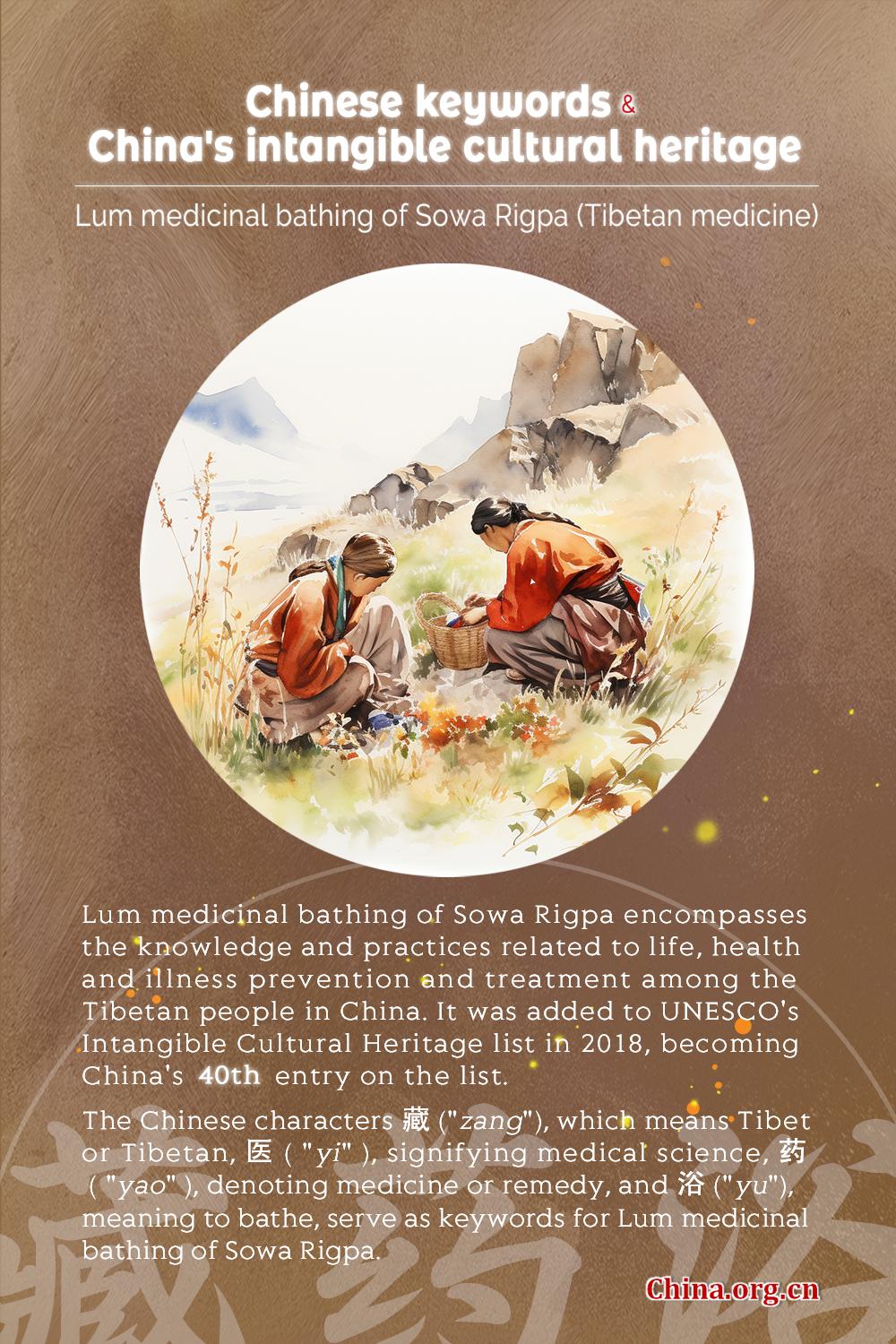Lum medicinal bathing of Sowa Rigpa (Tibetan medicine) and its Chinese keywords
- By Zhou Jing
 0 Comment(s)
0 Comment(s) Print
Print E-mail China.org.cn, August 10, 2023
E-mail China.org.cn, August 10, 2023
Editor's note: Lum medicinal bathing of Sowa Rigpa encompasses the knowledge and practices related to life, health and illness prevention and treatment among the Tibetan people in China. It was added to UNESCO's Intangible Cultural Heritage list in 2018, becoming China's 40th entry on the list.

The Chinese characters 藏 ("zang"), which means Tibet or Tibetan, 醫 ("yi"), signifying medical science, 藥 ("yao"), denoting medicine or remedy, and 浴 ("yu"), meaning to bathe, serve as keywords for Lum medicinal bathing of Sowa Rigpa.
"Lum" in Tibetan refers to the traditional knowledge and practices of bathing in natural hot springs, herbal water or steam to balance the mind and body, maintain health, and treat illnesses. "Sowa Rigpa" translates into Tibetan medicine and can be traced back around 2,500 years.
Lum was developed by integrating Tibetan people's worldview, grounded in the Jungwa-nga (five elements) comprising Earth, Water, Fire, Wind and Space, with an understanding of health and illness.
Lum's knowledge and practices are widely distributed in areas inhabited by Tibetans, including China's Tibet Autonomous Region and provinces such as Qinghai, Sichuan, Gansu and Yunnan.
Its practitioners range from farmers and herders to urban residents, with the Manpa (physician), Lum Jorkhan (pharmacist) and Manyok (assistant) playing crucial roles in its transmission. UNESCO highlights Lum's significance in improving health conditions, fostering a social code of behavior, and promoting respect for nature.
Today, Lum has been incorporated into modern medical college curricula as a supplement to formal education, representing the implementation and development of traditional Tibetan medical theories in modern healthcare practices.
On April 8, 2023, the Tibet Autonomous Region's health commission announced the establishment of a Tibetan medicine service system covering the entire region. All the region's community health centers now provide Tibetan medical services, as do 94.4% of its township hospitals and 42.4% of village clinics.
Find out more about China's intangible cultural heritage and their keywords:
China's 43rd UNESCO's ICH element: Traditional tea processing
China's 42nd UNESCO's ICH element: Wangchuan ceremony
China's 41st UNESCO's ICH element: Taijiquan




